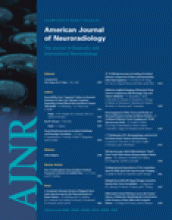Abstract
BACKGROUND AND PURPOSE: Musical murmurs (MMs), sometimes called seagull cry, goose cry, honks, or cooing murmur, are murmurs with a single frequency that sounds like a musical tone. Doppler detections usually show mirror-image parallel strings or bands of low to moderate frequency. Musical murmurs are mostly described in cardiac murmurs and have seldom been mentioned in cerebrovascular disease.
METHODS: A retrospective review of 12,000 patients from our neurosonographic data base of the past 7 years was conducted to find patients who had MMs during color-coded carotid and transcranial duplex sonographies.
RESULTS: Sixty-six musical murmurs were found in 60 patients (0.5% of all studied patients). There were 44 men and 16 women with a mean age of 63.8 years. Musical murmurs may occur with or without simultaneous turbulent flows, or very close to a high-intensity frequency (with systolic spindles) turbulent flow. Musical murmurs are detected more frequently in intracranial vessels (94%) than in extracranial cervical arteries. The pathologic changes corresponding to the area of MMs were high-grade stenosis of the arteries (58 MMs), small arteries serving as collateral circulation (5 MMs), carotid cavernous sinus fistulas (2 MMs), and Moyamoya disease (1 MM). Fifty (88%) of 57 patients with stenotic arterial lesions had histories of cerebral infarction or transient ischemic attack, and 64% of the cerebrovascular events occurred on the side appropriate to the MMs.
CONCLUSIONS: The presence of MMs in color-coded carotid duplex and transcranial color-coded duplex sonography imply severe underlying vascular diseases that require prompt treatment. Further cerebral angiographic study is warranted to clarify the underlying pathology in patients with MMs.
- Copyright © American Society of Neuroradiology












